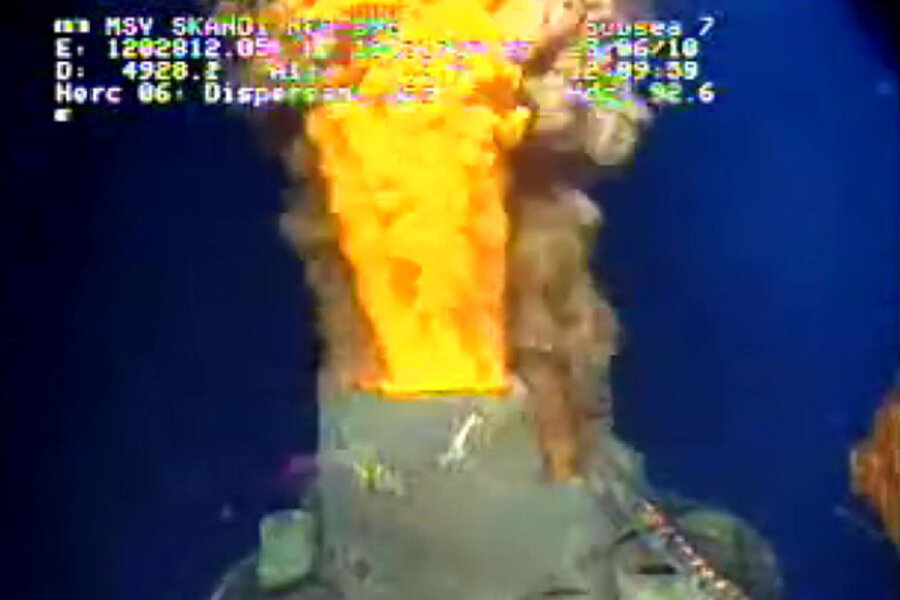BP oil spill: undersea accident increases flow of oil into Gulf
Loading...
BP has removed the containment cap that had been responsible for collecting as much as 16,000 barrels of oil a day from the leaking well in the BP oil spill. A robotic submarine reportedly dented a critical vent in the system, forcing BP to detach the cap Wednesday morning as a safety precaution.
An attempt to reinstall the cap is expected later Wednesday, Coast Guard Adm. Thad Allen said in a briefing.
The damaged vent is used to send warm water into the containment cap to prevent hydrates from freezing and clogging the system. It is uncertain how the remotely controlled device disrupted the cap system, Allen said.
RELATED: Why are BP's disaster bots so hard to control?
The containment cap is a crucial element of the oil-recovery system now in place on the floor of the Gulf of Mexico. Since its installment in early June, the cap has collected oil and sent it upward to the Discoverer Enterprise, a drill ship that separates the oil from the water and natural gas also collected by the cap.
Second containment method still working
Before its removal, the cap was working in tandem with a flexible hose that is connected directly to the blowout preventer that failed on April 20. This hose, connected to the blowout preventer's choke line, leads to the Q4000, a second ship that is burning off 10,000 barrels of oil daily. This collection method is still working even with the containment cap removed.
A third ship is expected to arrive by the end of the month and connect to the blowout preventer's kill line, burning off an additional 25,000 barrels of oil each day.
BP is also building a separate system of flexible riser pipes that is expected to increase capacity to between 60,000 to 80,000 barrels a day. The flexible pipes would also make it easier for ships to couple and decouple in the event of a hurricane.
Allen said this system would be ready to operate by Tuesday.
A 'densely packed' operation
The disruption of the container cap illustrates the sensitive nature of operations at the sea floor. The maneuverings of the remote vessels, in addition to the drilling of two separate undersea wells within a four-mile area, contributes to what Allen described as “a very densely packed operation.”
In the same media briefing Wednesday, Allen reported that two people working in the recovery efforts had died overnight in non-work related incidents. He said one person died due to a “swimming event” and the other was a vessel operator in Gulf Shores, Miss. Local police is investigating both deaths, he said.
RELATED: Why are BP's disaster bots so hard to control?
Related:





